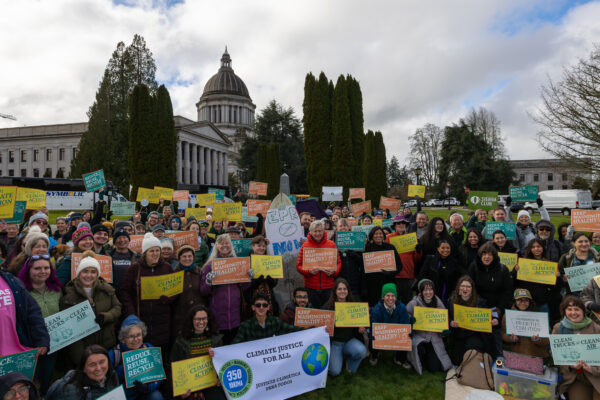Today is World Rivers Day, a celebration of our planet’s waterways. Ponder, for a few moments, the wonder of rivers and streams–so complex and varied. People have always known how meaningful rivers can be: Consider how many cities and towns have been built by riverbanks or river deltas; over the course of human history, they’re nearly countless. Remember how many civilizations have grown up around great rivers: China’s Yellow River, Egypt’s Nile, America’s Mississippi, or the Columbia River that connects Washington and Oregon and has sustained Native peoples since time immemorial.
It’s important, though, to move beyond what rivers can do for us. Yes, they create habitat for fish like salmon and trout, provide irrigation for crops, serve as the world’s original highways, transporting people and goods millennia before the development of railroads or cars. But they’re even more than that.
Think about rivers on their own terms, give thanks for the simple fact that rivers exist. Indigenous peoples have cultivated this habit of mind for millennia. During the fight against the Dakota Access Pipeline, the Lakota phrase “Mní wičhóni,” or “Water is life,” became a national protest mantra.
Though traditions vary, all Tribes hold water to be sacred. Some consider waterways like rivers to be relatives. The Blackfeet of Montana held that water was not only sacred, but also a separate realm of existence with its own rules and spirits. The Celtic peoples of northern Europe believed that each river had its own spirit, and that people must get permission from the river spirit before attempting a crossing or building a bridge.
Globally, several Indigenous Nations have won protection for rivers by insisting that a river is like a person, with its own history and needs and rights. In New Zealand, the Maori have used this argument to win “personhood status” for the Whanganui River, one of the largest rivers on that nation’s North Island. A court in North India has judged the Ganges and its main tributary living human entities. Similar measures have passed in Ecuador, Bolivia and Colombia.
Wonder and gratitude run through all these traditions and decisions. It’s easy to see why:
Fresh water is almost everywhere, and yet it is rare.
Most people do not go even a day without passing a creek, a stream or a river. In most parts of the world, land is divided by a waterway, like the veins of a leaf or the blood vessels in our bodies. And yet, only 3 percent of the world’s water is freshwater.
The water in rivers is a non-renewable resource, constantly recycled through evaporation and precipitation.
The water in the Spokane River, or the Skagit, or the Duwamish has circulated around the globe for billions of years. It’s highly possible that some of the water atoms in those rivers were once used to make wine in ancient Rome, or to steam rice in Japan, or for a ceremony of one the tribes in our region millennia ago.
A river is so much more than a blue line.
It is not so much a single entity as a collection of conflicting forces. Currents, course, flow, speed and depth change constantly. Currents layer on top of one another, in all directions.
A river is a constellation of zones and ecosystems.
Near a river’s headwaters, where trees are likely to shadow, or even completely shade, the stream, invertebrates that shred leaves dominate. Further downstream, macroinvertebrates live in the riffles, and diverse fish populations congregate in pools. Different fish species tend to congregate at different parts of a river. Trout and smallmouth bass typically stick to narrow, fast-moving upper reaches while species like catfish prefer wider, slower-moving water lower in the river’s course. As a river widens toward the sea and creates an alluvial plain or delta, it pushes a huge plume of freshwater into the sea, providing a zone for migrating fish like salmon or steelhead to adjust their body chemistry as they transition from freshwater to saltwater.
Some animals that live in rivers can spend time below the riverbed.
Beneath each river lies a zone of saturated ground called the “hyporheic zone.” Some riverine organisms have been found in groundwater as far as two kilometers from the active riverbed.
Rivers are great connectors.
In some biomes, like grasslands or deserts, rivers provide the most vegetated habitats that exist, creating vital habitats. In the many places around the world where forests have been fragmented, the forested edges of rivers can provide migration corridors for wildlife.
It reminds us, on this World Rivers Day, that water is life indeed.
Your donation ensures a sustainable future.



